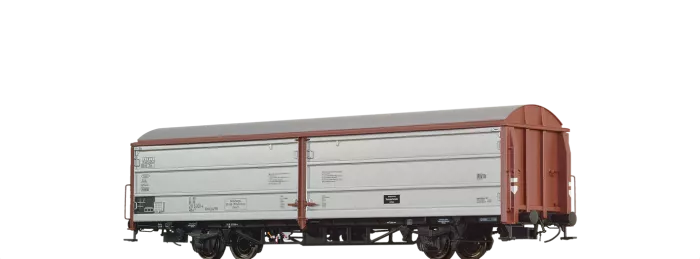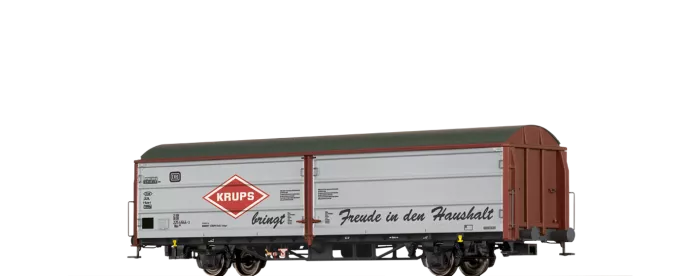
Covered Freight Car HHbills-x299 "Telefunken" DB
Road no.: 21 80 2276 689-1
Model details
- Brake blocks in wheel plane
- Bogie with three-point support
- Individually mounted axle brake rod
- Individually mounted brake systems
- Metal axle holders
- Perforated car body supports
- True to original construction differences
Telefunken is a registered trademark.
Downloads
Info about the original
By the middle of the 1960s, DB procured numerous special wagons with a sliding roof and sliding walls. However, examinations proved that, in many cases, it was possible to forego the opening roof and that an optimized access from the side was sufficient for the majority of cargoes. Consequently, the Hbis 299 which was still initially called the Klmmgs was built from 1966 onwards. To a large extent, the design corresponded to the previously built Tbis 869 sliding roof wagons; the accessibility to the corner was primarily improved. The centre column only had a width of 320 mm; this width amounted to 1000 mm on the sliding roof wagons. The wagons proved themselves in operation and were accepted by the loaders. 2,950 units had already been built by 1970 and the maximum quantity of 8,444 units was reached in 1975. From 1974 onwards, the wagons were equipped with spark arrestor plate ex works; a percentage of the older wagons were retrofitted with this component. From 1984 onwards, they obtained the national secondary genre letters –ww. Approximately half of the built wagons were equipped with the “Daberkow” transport protection equipment system.They became Hbis-t from 1979 onwards and became Hbils from 1984 onwards. However, all of the transport protection equipment was remoted from the mid-1980s. In return, 754 wagons obtained reinforced, lockable separating walls in 1991 and, from that point on, were given the designation Hbills-x. In 1994, DB AG assumed 8,403 BA 299 wagons of all types. In 2000, 2,500 wagons were still being operated by “Railion”, the Hbis-ww accounts for the largest share with approx. 2,700 wagons. Eight years later, just over 1,000 Hbis-ww and 90 Hbillsx were still being kept for goods traffic. In association with newer sliding wall carriages, they are now particularly striking thanks to their almost delicate appearance. The original color was unpainted aluminium and the undercarriage was black. This lead to the development of all shades of contamination conditions during operation; address fields are bright or dark shadowed and even both in some cases in the event of a new lettering. To some extent, rented wagons contained the advertising lettering of the adjuster.







